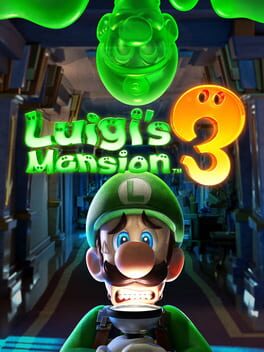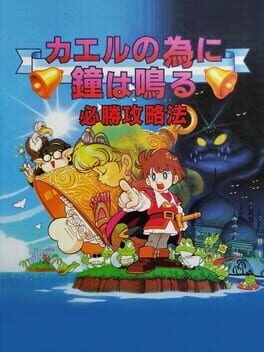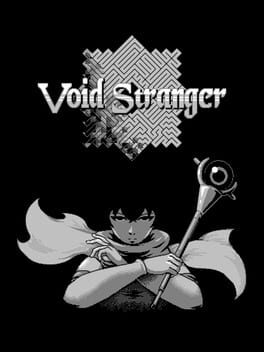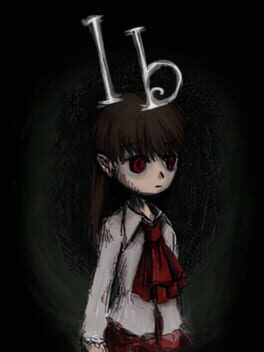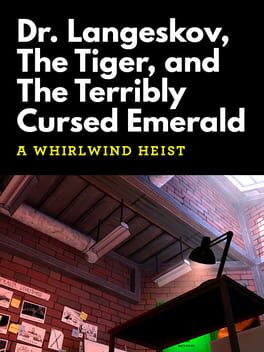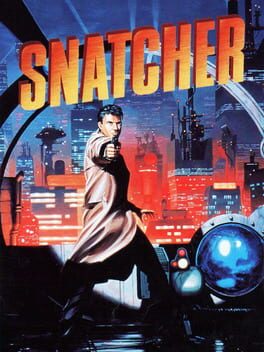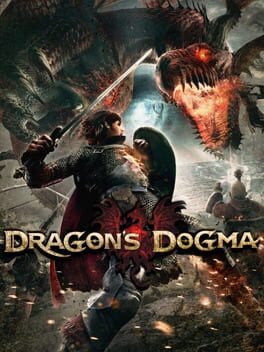nex3
BACKER
2015
When I first played Bloodborne, I appreciated it for what it was (an eldritch entanglement of orgasmic despair) while also quietly thinking that this was not a game I was likely to replay. I'd seen the sights and fought the fights, and while there were a few great bosses there were many more hulking beasts whose battles I didn't particularly care for.
My first playthrough was hot off Dark Souls 3 and still chasing the high of Sekiro the year before. All I wanted were those rhythm-game deflects, memorizing movesets and executing perfect counters, a clockwork dance of nerve and sword. With a few exceptions that wasn't what Bloodborne was about, and while I made my peace with that I couldn't bring myself to love it.
Flash forward a year and a half. By this point, I'd played my way backwards through the Soulslike oeuvre and beaten Sekiro two more times. As I watched over a friend's virtual shoulder during his first Bloodborne playthrough, and I felt the bloodlust rise within me. I wanted to sink my teeth in once again. And more than that, I wanted to do it differently: eschewing the parry-and-blade build I'd made a tradition of playing across all these games for my first go at a real heavy weapon.
So began my NG+ playthrough, not with a bang but with the buzz of my Whirligig Saw. It turned out that the beast bosses I'd dismissed in 2020 were a delight in 2022 with a deeper understanding of the form and the devil-may-care attitude of a player whose beaten them before and knows she will again. And as the sun rose for a third time over Yharnam, it was all I could do to keep myself from diving straight back in to NG++.
My first playthrough was hot off Dark Souls 3 and still chasing the high of Sekiro the year before. All I wanted were those rhythm-game deflects, memorizing movesets and executing perfect counters, a clockwork dance of nerve and sword. With a few exceptions that wasn't what Bloodborne was about, and while I made my peace with that I couldn't bring myself to love it.
Flash forward a year and a half. By this point, I'd played my way backwards through the Soulslike oeuvre and beaten Sekiro two more times. As I watched over a friend's virtual shoulder during his first Bloodborne playthrough, and I felt the bloodlust rise within me. I wanted to sink my teeth in once again. And more than that, I wanted to do it differently: eschewing the parry-and-blade build I'd made a tradition of playing across all these games for my first go at a real heavy weapon.
So began my NG+ playthrough, not with a bang but with the buzz of my Whirligig Saw. It turned out that the beast bosses I'd dismissed in 2020 were a delight in 2022 with a deeper understanding of the form and the devil-may-care attitude of a player whose beaten them before and knows she will again. And as the sun rose for a third time over Yharnam, it was all I could do to keep myself from diving straight back in to NG++.
2017
When I first tried Hollow Knight five years ago, I bounced off it hard. I had not yet known the sweet embrace of Dark Souls. Although I did enjoy a platformer and the occasional metroidvania, the rhythm of this game's combat did not match the beat of my heart, nor did its by-the-book early traversal quicken my pulse. I didn't make it deep enough to even begin to meet the dramatis personae. I just set it down intending never to pick it back up.
That same heart, in the intervening years, grew to love From Software's oeuvre. This love has much to do with why I did eventually return, although not perhaps for the reasons you'd expect. Although Hollow Knight borrows some formal aspects from those games, most notably the bench/shade mechanic and a preoccupation with boss fights, it is on the whole more different than it is similar. And every time I've tried to dip my toe into a game because it's "like Dark Souls", I've walked away shaking my head and mourning designers' inability to learn the right lessons. That was never going to be my reason for playing this.
To understand the true reason, you must first understand what happened after FromSoft stole my heart. I played through all the games in reverse, from Sekiro to Demon's Souls, then wept for there were no more worlds to conquer. But to my friends, these paths were as yet untrodden. I would tune into their streams in vicarious delight as they first saw sights that I now knew so well. And on rare and precious occasion, a friend would ask me to take their hand and guide them through a game entire, the voice in their ear every step of the way.
I joined the journey of one friend in particular through Lordran, from believing these games were fundamentally Too Hard for them to beating the DLC bosses so fast it put the sickest Os in the group chat to shame. Playing together as learner and guide made us better friends and gave them a new perspective on their own skill broader than any video game. At the end, they told me, "I want to teach you to love Hollow Knight like you taught me to love Dark Souls". Now you understand: I had to return to this game.
So I picked Hollow Knight back up, started a new save, and began again. To be sure, after half a decade of honing my action game skills, I was far more proficient than I was before. Although the core mechanics are vastly different than a FromSoft 3D slash-and-roll, my skills transferred plenty well. I knocked out bosses quickly enough to leave Sable as dumbstruck as they had left me. But the real difference, the reason I'm wholeheartedly giving this game five stars now when I didn't even care to finish it before, was Sable. (And Sam! Another friend who was not as omnipresent, but who popped in frequently enough to substantially shape my impression of the game as well.)
Their infectious affection unlocked for me everything there is to love about Hollow Knight. With their encouragement I slipped quickly through the early game and found that the meat of it was indeed good. I could appreciate in fullness the personality of the various characters met through the game, their foibles and their tragedies. I could enjoy the environment design, have fun playing around with various builds, and really sink my teeth into bosses.
The boss design, once it gets challenging, is fascinating. Each boss has a relatively small set of moves, and the effective answers to them are highly technical combinations of movement and attacks. The emphasis is less on finding an opening and more on learning to sneak in hits while you evade. On the other hand, because you rebuild "soul" for healing while hitting the boss, in principle if you can find a hit/heal loop however inefficient you can just run it indefinitely even with imperfect play. The bosses then have to be designed around this, giving increasingly few chances to heal at all as they get more difficult but also taking quite few hits relative to, say, a Dark Souls boss.
Perhaps the place where Hollow Knight draws most from From's playbook is its plot: intricate and mournful but always a background presence, relegated to fragments of text with vague allusions and the occasional brief onscreen interaction. It must be easy to beat this game without understanding it at all, so once again I'm grateful to the guidance I had—just enough to draw my attention to key moments and answer the occasional question, never so much to shatter my nascent understanding with too explicit an explanation.
The story works so well precisely because it's understated. It's a collage of moods of which you see fragments, which the game asks you to connect yourself, to see the tendrils intertwine between what it has to say about parents and childhood, about duty and choice, about love and emptiness. It's a story in which can reflect much about what the player brings to it while still holding its own themes strong, not simply conforming to the reader's views. It's beautiful in that way.
I do have my complaints about Hollow Knight. I actually have kind of a lot of complaints. It's very clearly Team Cherry's freshman effort, full of little design flaws—why does it fire a spell if you press B to leave the menu and leave it down a little too long? why do you have to juggle charm notches just to see where you are on the map? why can't you see the world map in the fast travel screen?—that routinely drive me up a wall. But they're all small, and the ones that aren't fixable with mods are easy enough to simply ignore. And even for this, having a friend around helped. I am, after all, a huge believer in the healing power of bitching about stuff that annoys you.
Sable, since I know you'll read this: You did it. You taught me to love Hollow Knight. Thanks to you, I now have strong opinions about bug ghosts and spider/bee cross-species adoption. Dung beetles make me sad now and it's all your fault. I am changed irrevocably. Thank you.
2023
"If it feels like you're suffering, you're probably missing a movement item," my friend Aura tells me as I throw myself against a nearly-impossible platforming section. "Oh, I know," I reply, "but what if I can do it anyway?" And, dear reader, I could.
If you play Pseduoregalia and unlock every movement mechanic in the expected order and solve every puzzle using the intended solution, you are experiencing a fundamentally different game than I. To me, this is a game of getting away with something, piecing together the tools you have on hand to sneak through challenges designed for different tools and steal rewards meant for another you in another time. The movement is so deep and so powerful once you push it to its limits that you can go almost anywhere with only a few mechanics.
This makes me wonder: why are there so few 3D games that really focus in on the technical complexity of motion in 3D space? Where is the evolutionary branch of 3D platformers that zoomed in on the platforming instead of the world around it? Did I miss them, or does Pseudoregalia really stand alone?
One thing's for sure: this is going to have the absolute sickest low% speedruns you've ever seen.
If you play Pseduoregalia and unlock every movement mechanic in the expected order and solve every puzzle using the intended solution, you are experiencing a fundamentally different game than I. To me, this is a game of getting away with something, piecing together the tools you have on hand to sneak through challenges designed for different tools and steal rewards meant for another you in another time. The movement is so deep and so powerful once you push it to its limits that you can go almost anywhere with only a few mechanics.
This makes me wonder: why are there so few 3D games that really focus in on the technical complexity of motion in 3D space? Where is the evolutionary branch of 3D platformers that zoomed in on the platforming instead of the world around it? Did I miss them, or does Pseudoregalia really stand alone?
One thing's for sure: this is going to have the absolute sickest low% speedruns you've ever seen.
2019
Did the economies of these games change, or did I? When I played the first Luigi's Mansion, every coin and fluttering dollar I found felt satisfying, like a nibble of some tasty meal. Now it feels meaningless, which makes the core loop of the game, snuffling and sucking at every corner of every room, feel just a bit more hollow. Still enjoyable, but with an undeniable sense of going through the motions.
2014
When I first played this just after it launched, I was blown away by how gracefully it interwove narrative and mechanical interests to inspire a feeling of wonder and infinite possibility. In the eight years since then, I've often compared it to other "modular narrative" games that also try use mechanics to allow players to guide themselves through story, and almost every time found 80 Days to come out on top.
Eight years is a long time, though, and I began to wonder if I might be remembering this game as more magnificent than it actually was—and thereby holding other games to not just a high standard, but an impossible one. So I decided to boot it up again on its 8th anniversary and see how well it held up.
Dear readers, it held up well. It really is true that almost nothing I've played since builds a self-guided narrative so effectively (with Sunless Skies being one notable exception). The formula itself isn't very complex: have many places that the player can traverse non-linearly; give each place (and each route between) them its own little micronarrative; create occasional connections between these narratives; and tie all of these into a simple resource system. But this simple formula gives rise to an incredible sense that every run is its own unique story told in tandem by the player and the game.
Eight years is a long time, though, and I began to wonder if I might be remembering this game as more magnificent than it actually was—and thereby holding other games to not just a high standard, but an impossible one. So I decided to boot it up again on its 8th anniversary and see how well it held up.
Dear readers, it held up well. It really is true that almost nothing I've played since builds a self-guided narrative so effectively (with Sunless Skies being one notable exception). The formula itself isn't very complex: have many places that the player can traverse non-linearly; give each place (and each route between) them its own little micronarrative; create occasional connections between these narratives; and tie all of these into a simple resource system. But this simple formula gives rise to an incredible sense that every run is its own unique story told in tandem by the player and the game.
This game absolutely luxuriates in its existence as a video game. You can practically see the designers standing around a whiteboard jotting down ideas for how to use the quirks and foibles of this little adventure game engine to tell as many stories and make as many jokes as possible. The combat system is purely deterministic which might be annoying in a lesser game, but here is used to great effect both cinematically and from a design perspective—grinding is replaces by moving through the game's many subplots and exploring its areas while still capturing the joy of numbers going up.
And what better platform for a game that wants to show off its materiality than the original Game Boy? Such a tremendously underpowered little thing, barely able to hold a game together, but Kaeru no Tame manages to flip that into a strength. Every new interaction and mechanic feels like a magic trick: the game pulls a zip line out from behind your ear in the final act with a flourish, and it startles and amazes precisely because you can tell that it's at the limits of what the system can accomplish.
They don't make 'em like this anymore, and I'm not sure they even can—at least not from a major video game studio. Now it's up to hobbyists and indies to keep these platforms alive and spin their restrictions into gold.
And what better platform for a game that wants to show off its materiality than the original Game Boy? Such a tremendously underpowered little thing, barely able to hold a game together, but Kaeru no Tame manages to flip that into a strength. Every new interaction and mechanic feels like a magic trick: the game pulls a zip line out from behind your ear in the final act with a flourish, and it startles and amazes precisely because you can tell that it's at the limits of what the system can accomplish.
They don't make 'em like this anymore, and I'm not sure they even can—at least not from a major video game studio. Now it's up to hobbyists and indies to keep these platforms alive and spin their restrictions into gold.
2023
Playing this game is a process of gradually tuning your mind to its frequency like a radio station, learning the languages it speaks as well as the gaps in what it says, until it feels like your whole body is resonating in harmony with it. It's a constant dance between fascinations: as soon as your mind is wholly absorbed with the first-order tile puzzles, the game zooms out and gets you thinking about the world it takes place in. The moment you start to really dig into the lore, it crashes back in close and reminds you that it's really about the deeply personal love and loss of each of the characters. And to see more of those characters, of course, you must do more sokoban.
It's hard to talk in detail about the game without spoilers, but I'll say this: I filled four pages with notes about this game, spilling over into a spreadsheet, a screenshot folder, and a large collection of video recordings. The expertise with which its layered puzzles are assembled is extraordinary, hitting a perfect difficulty point where you feel like a genius for each solve but (almost) everything feels like it's using the same design language that you can become fluent with. It stands with Riven as one of the best puzzle games I've ever played.
But that's not even the thing I'll remember most about Void Stranger. What will stay with me long after I forget the trick to B213 or the best way to route bulls is the love the characters hold for one another and the fucked up beautiful lengths they'll go to enact it. In the end, the heart of the game is summed up in the words uttered by Eus's statue... which I'll let you discover for yourself.
It's hard to talk in detail about the game without spoilers, but I'll say this: I filled four pages with notes about this game, spilling over into a spreadsheet, a screenshot folder, and a large collection of video recordings. The expertise with which its layered puzzles are assembled is extraordinary, hitting a perfect difficulty point where you feel like a genius for each solve but (almost) everything feels like it's using the same design language that you can become fluent with. It stands with Riven as one of the best puzzle games I've ever played.
But that's not even the thing I'll remember most about Void Stranger. What will stay with me long after I forget the trick to B213 or the best way to route bulls is the love the characters hold for one another and the fucked up beautiful lengths they'll go to enact it. In the end, the heart of the game is summed up in the words uttered by Eus's statue... which I'll let you discover for yourself.
2012
Art galleries in video games are inherently cool because they have to contain real art. Some games will cop out and fill them with bland portraits or reproductions of real-world art, but not so for Ib. Everything on display here exhibits real creativity from kouri, and while not all of it is great art there are enough cool pixel-art sculptures or clever installation pieces that I was satisfied even just as a visitor to this gallery, let alone a player of the horror game that takes place within.
2016
I feel it's important to note that a combination of two things finally got me to play my first real Souls: playing Sekiro and later growing to miss it dearly, and attempting to play a much worse Soulslike and getting so fed up I took solace in the real thing. For all their fearsome reputation, FromSoft games function like eductational tools: they take your hand and gently guide you from a novice to a player who can confidently defeat even the nastiest boss. They want you to succeed and they speak a consistent and thoughtful language to teach you how. If other games truly want to grab a piece of From's shining star, they don't need to learn a combat system or checkpoint-based level design, they need to learn how to teach.
2023
The most Remedy of all Remedy games, this has all the virtues of their last few releases going at full blast but still doesn't manage to escape their flaws. The writing is charming throughout: Sam Lake's dry sense of humor shines through the low-budget TV spots and the glimpses we get of Control's FBC, but it's equally capable of pulling at the player's heartstrings. Particularly for a player invested in the people of Bright Falls and in Alan's own story, there's a lot food here.
The large-scale plot is where the game really fires on all cylinders, though. It's meticulous and intricate, a full-on puzzle box that renders Alan Wake 1's opening quote on horror not having a clear explanation deeply ironic in retrospect. It loops in and around itself, tying knots of astounding beauty, wrapping up the emotional core of the game like a gift for the player.
It even pushes the formal boundaries of what a game can be in a way no AAA studio other than Kojipro has dared to do. I'm deeply thrilled to see full-motion video again after being effectively exiled since the 90s, and absolutely head over heels for the way it's used in Alan Wake II. I can't say much more without risking spoilers, but there were more than a few moments that had me shouting gleefully at the screen.
The only problem is, in grand Remedy tradition, the game isn't actually that fun to play. As incredibly gutsy as the plot and writing is, the game design feels shot through with a deep anxiety about not being "game-y" enough. It's filled with little collectables and largely-irrelevant upgrade trees that just feel banal in juxtaposition with the absolute mastery of the rest of the game.
To be fair, it's solidly an improvement on the previous Alans Wake and particularly on Control's agonizing need to act modern-AAA. The combat is no longer the unmitigated slog of AW1 and AWAN. But neither is it fun, especially with the tight resource constraints and intense awkwardness of trying to fumble with the equipment UI in combat.
Nor do the non-action aspects of the play bear the weight they're asked to. The game's photo-and-string conspiracy board simulator feels like sleepwalking. The case board only asks the player to follow a single well-lit path, placing one piece of "evidence" after another until Saga Anderson voices a fairly obvious deduction. It's just a treadmill, an action to take purely for the sake of having the player do something during exposition. That's not inherently a bad thing from a design perspective, but it feels galling in the broader context of the game. It has a conspiracy board and it asks the player to untangle a complex metaplot, but these two aspects of play are totally disconnected from one another.
This glaring contrast between the mediocre reality and a shining possibility is also what makes the combat so frustrating. Alan Wake 2 takes on the ancillary design trappings of survival horror, with limited resources, inventory grid, and threatening enemies, but it doesn't follow through. In order for those limitations to induce interesting decision points, the game also needs to make it possible not to fight enemies and make a victory at least somewhat permanent. Just dropping them into a shooter with respawning mobs ends up with a frustrating mess.
It's a testament to how fabulous the good parts of this game are that I still consider it truly excellent in spite of its flaws. I'll probably play "The Final Draft", its version of NG+, within a few weeks. But I'm disappointed that I can't endorse the entire game as wholeheartedly as I'd like, and I hope one day Remedy gets as confident with their mechanical design as they are with their writing.
The large-scale plot is where the game really fires on all cylinders, though. It's meticulous and intricate, a full-on puzzle box that renders Alan Wake 1's opening quote on horror not having a clear explanation deeply ironic in retrospect. It loops in and around itself, tying knots of astounding beauty, wrapping up the emotional core of the game like a gift for the player.
It even pushes the formal boundaries of what a game can be in a way no AAA studio other than Kojipro has dared to do. I'm deeply thrilled to see full-motion video again after being effectively exiled since the 90s, and absolutely head over heels for the way it's used in Alan Wake II. I can't say much more without risking spoilers, but there were more than a few moments that had me shouting gleefully at the screen.
The only problem is, in grand Remedy tradition, the game isn't actually that fun to play. As incredibly gutsy as the plot and writing is, the game design feels shot through with a deep anxiety about not being "game-y" enough. It's filled with little collectables and largely-irrelevant upgrade trees that just feel banal in juxtaposition with the absolute mastery of the rest of the game.
To be fair, it's solidly an improvement on the previous Alans Wake and particularly on Control's agonizing need to act modern-AAA. The combat is no longer the unmitigated slog of AW1 and AWAN. But neither is it fun, especially with the tight resource constraints and intense awkwardness of trying to fumble with the equipment UI in combat.
Nor do the non-action aspects of the play bear the weight they're asked to. The game's photo-and-string conspiracy board simulator feels like sleepwalking. The case board only asks the player to follow a single well-lit path, placing one piece of "evidence" after another until Saga Anderson voices a fairly obvious deduction. It's just a treadmill, an action to take purely for the sake of having the player do something during exposition. That's not inherently a bad thing from a design perspective, but it feels galling in the broader context of the game. It has a conspiracy board and it asks the player to untangle a complex metaplot, but these two aspects of play are totally disconnected from one another.
This glaring contrast between the mediocre reality and a shining possibility is also what makes the combat so frustrating. Alan Wake 2 takes on the ancillary design trappings of survival horror, with limited resources, inventory grid, and threatening enemies, but it doesn't follow through. In order for those limitations to induce interesting decision points, the game also needs to make it possible not to fight enemies and make a victory at least somewhat permanent. Just dropping them into a shooter with respawning mobs ends up with a frustrating mess.
It's a testament to how fabulous the good parts of this game are that I still consider it truly excellent in spite of its flaws. I'll probably play "The Final Draft", its version of NG+, within a few weeks. But I'm disappointed that I can't endorse the entire game as wholeheartedly as I'd like, and I hope one day Remedy gets as confident with their mechanical design as they are with their writing.
1999
It's impossible not to compare this to Resident Evil. This game shines on a narrative level: the plot is more robust and interesting and the environment design leans substantially less heavily on existing horror tropes and ends up legitimately unsettling as a result. The mechanics, on the other hand, are much less revelatory and end up decidedly obnoxious in boss fights that turn the tank controls from an artistic decision to a pure impediment.
The biggest innovation relative to the survival horror progenitor is the wide open city overworld shrouded in the series's iconic fog. This turns the whole dynamic of the game's resource management on its head. No longer do foes exist exclusively on a room-by-room basis, where figuring out how to successfully route around an enemy is as valid a solution as killing it. Silent Hill presents a version of the dungeon crawler's core question: will you take the risk of exploration in exchange for the rewards you may find?
Broadly speaking, if you're decent at the game, killing the foes you encounter in the overworld so you can explore it thoroughly will give you more resources than you spend. On the other hand, if you (like me) try to play this like Resident Evil and conserve your healing items and ammunition by carefully avoiding combat while making your way directly to your next objective, you'll miss not just useful items but a deeper understanding of the plot and indeed the possibility of a good ending.
Silent Hill thus ends up being a very different kind of survival horror. You're certainly still hoarding resources, but you're not running scared in the same way. The game throws frightening beasts at you but it also asks that you learn to face down and overcome them. In doing so, it dilutes the fear somewhat, and I think that's a bit of a shame.
The biggest innovation relative to the survival horror progenitor is the wide open city overworld shrouded in the series's iconic fog. This turns the whole dynamic of the game's resource management on its head. No longer do foes exist exclusively on a room-by-room basis, where figuring out how to successfully route around an enemy is as valid a solution as killing it. Silent Hill presents a version of the dungeon crawler's core question: will you take the risk of exploration in exchange for the rewards you may find?
Broadly speaking, if you're decent at the game, killing the foes you encounter in the overworld so you can explore it thoroughly will give you more resources than you spend. On the other hand, if you (like me) try to play this like Resident Evil and conserve your healing items and ammunition by carefully avoiding combat while making your way directly to your next objective, you'll miss not just useful items but a deeper understanding of the plot and indeed the possibility of a good ending.
Silent Hill thus ends up being a very different kind of survival horror. You're certainly still hoarding resources, but you're not running scared in the same way. The game throws frightening beasts at you but it also asks that you learn to face down and overcome them. In doing so, it dilutes the fear somewhat, and I think that's a bit of a shame.
1992
Although the plot is shaky at times (particularly in the third act) and the combat is rough without a light gun, this still feels like a pristine video game. The art is still gorgeous thirty years later, moody pixel art cityscapes perfectly rendering the first wholeheartedly cyberpunk video game and providing a visual legacy for the twilight of the original cyperpunk era. Even the pacing is excellent, which is quite a trick to pull off for an adventure game—a genre I dread as much as I love simply for how much time I end up spending reading item descriptions. It's a blessing that this got a contemporary release in the west.
2012
This game is four or five brilliant ideas crammed into an ill-fitting Skyrim suit. The pawn-based AI party system is really cool, and the fights that really take advantage of it to have different party members focusing on different tasks are really fun. Climbing on bosses, pulling them off-balance, and focusing different body parts for different effects makes them feel challenging and exciting in a totally different way than action games in the Dark Souls lineage.
The moment-to-moment melee combat is also fascinating. In addition to reactive moves like parries and a dodge attack that gives a bonus if you perfect dodge (prefiguring Final Fantasy XVI), even the basic combo has a rhythm component to it: depending on the tempo of your button presses, you can keep comboing light sword swipes move into a medium finisher, or go for a heavy attack into a longer sequence of damaging strikes.
I discovered all of this within the first few minutes of playing the game, and I was over the moon. If this was the basic combat, imagine what it would look like at an advanced level! But sadly, that didn't pan out. The rhythm components I mentioned above are all there is; there's no complexity to the basic attacks beyond that. And outside of boss fights, the encounter design is entirely structured around throwing tons of mobs at you at once, so all the interesting reactive skills become largely irrelevant and AOEs become the order of the day. By the middle of the game, moving through the overworld became a slog of mob fight after mob fight—unavoidable because you have no direct control over your party—and desperately juggling inventory between the party to avoid overencumbering yourself.
This is the sort of game that was always destined to be a cult classic. It fights with its own goals too much to be a true masterpiece, but its moments of genius are still largely unexploited by the games that have come out since its release. It's left me very excited to see what they do with the sequel.
The moment-to-moment melee combat is also fascinating. In addition to reactive moves like parries and a dodge attack that gives a bonus if you perfect dodge (prefiguring Final Fantasy XVI), even the basic combo has a rhythm component to it: depending on the tempo of your button presses, you can keep comboing light sword swipes move into a medium finisher, or go for a heavy attack into a longer sequence of damaging strikes.
I discovered all of this within the first few minutes of playing the game, and I was over the moon. If this was the basic combat, imagine what it would look like at an advanced level! But sadly, that didn't pan out. The rhythm components I mentioned above are all there is; there's no complexity to the basic attacks beyond that. And outside of boss fights, the encounter design is entirely structured around throwing tons of mobs at you at once, so all the interesting reactive skills become largely irrelevant and AOEs become the order of the day. By the middle of the game, moving through the overworld became a slog of mob fight after mob fight—unavoidable because you have no direct control over your party—and desperately juggling inventory between the party to avoid overencumbering yourself.
This is the sort of game that was always destined to be a cult classic. It fights with its own goals too much to be a true masterpiece, but its moments of genius are still largely unexploited by the games that have come out since its release. It's left me very excited to see what they do with the sequel.



